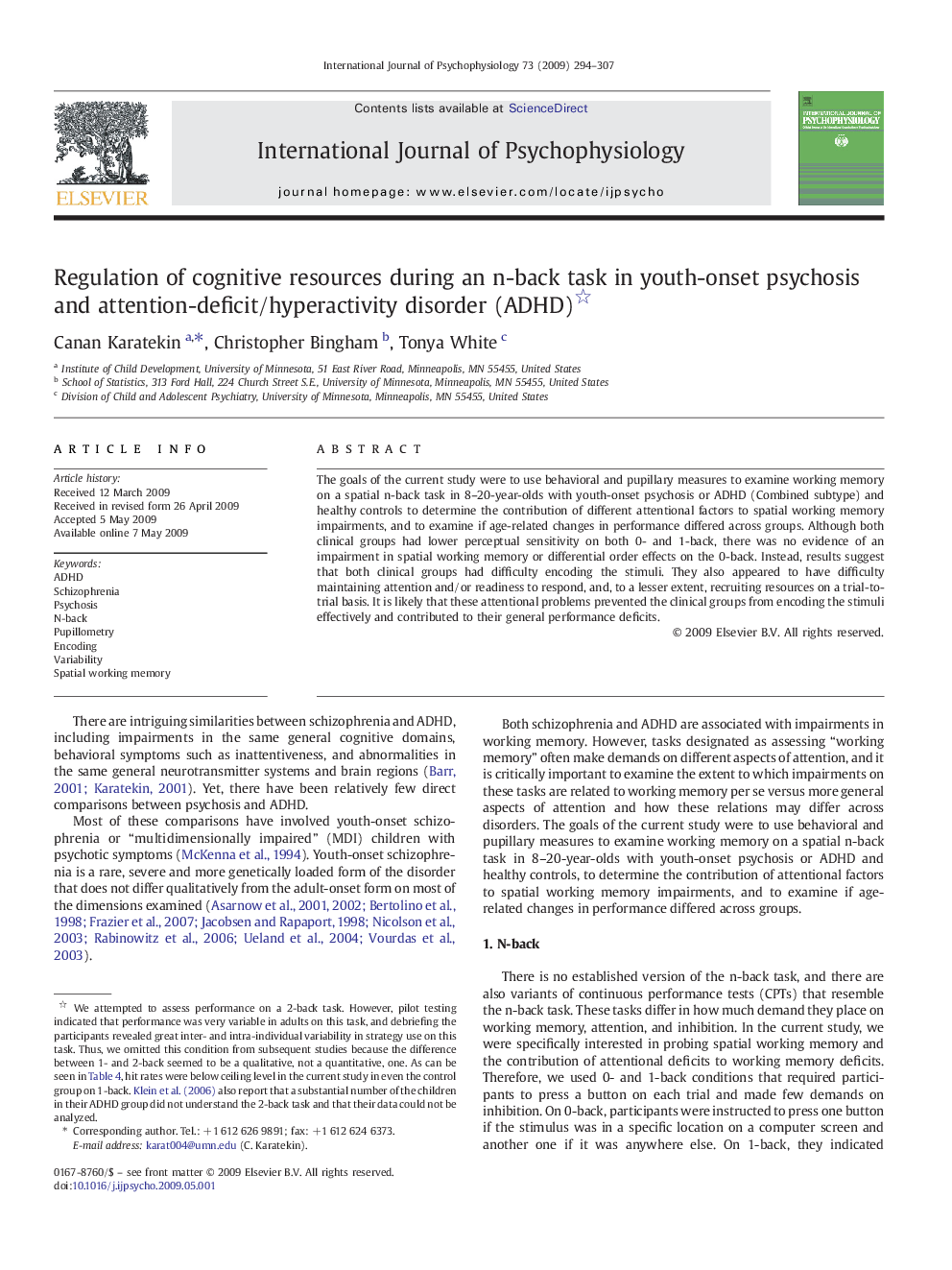| Article ID | Journal | Published Year | Pages | File Type |
|---|---|---|---|---|
| 7296448 | International Journal of Psychophysiology | 2009 | 14 Pages |
Abstract
The goals of the current study were to use behavioral and pupillary measures to examine working memory on a spatial n-back task in 8-20-year-olds with youth-onset psychosis or ADHD (Combined subtype) and healthy controls to determine the contribution of different attentional factors to spatial working memory impairments, and to examine if age-related changes in performance differed across groups. Although both clinical groups had lower perceptual sensitivity on both 0- and 1-back, there was no evidence of an impairment in spatial working memory or differential order effects on the 0-back. Instead, results suggest that both clinical groups had difficulty encoding the stimuli. They also appeared to have difficulty maintaining attention and/or readiness to respond, and, to a lesser extent, recruiting resources on a trial-to-trial basis. It is likely that these attentional problems prevented the clinical groups from encoding the stimuli effectively and contributed to their general performance deficits.
Related Topics
Life Sciences
Neuroscience
Behavioral Neuroscience
Authors
Canan Karatekin, Christopher Bingham, Tonya White,
